Project Overview
6/18/2020: Extended end date per approved NCE request from PI and student. - Jen vS
Information Products
Commodities
- Agronomic: clovers, grass (misc. perennial)
- Additional Plants: native plants
Practices
- Animal Production: feed/forage, grazing management, range improvement, rangeland/pasture management
- Crop Production: drought tolerance, irrigation, nutrient cycling, nutrient management, water management, water storage
- Education and Training: demonstration, networking, on-farm/ranch research, participatory research, workshop
- Farm Business Management: risk management, value added, whole farm planning
- Natural Resources/Environment: carbon sequestration, soil stabilization
- Pest Management: mulches - general
- Production Systems: holistic management
- Soil Management: composting, organic matter, other, soil analysis, soil chemistry, soil microbiology, soil physics, soil quality/health
- Sustainable Communities: local and regional food systems, partnerships, sustainability measures
Abstract:
Title: Climate mitigation through soil carbon sequestration: increasing soil resilience and plant productivity in rangelands through compost application
Climate change has already shifted temperature and precipitation levels in Colorado, making it hotter and drier. Due to these changes, ranchers are more inclined to improve their soil’s health, specifically the water holding capacity (WHC). By increasing the WHC of soil, ranchers can expect positive effects of increasing plant productivity. Soil’s WHC is extremely important in arid climates where ranchers rely upon flood irrigation during the spring and early summer. Once the irrigation is shut off, the water needs to sustain the grasses throughout the growing season until harvest. Typically, ranchers in the West harvest three cuts of hay during the season. In Gunnison, due to the short growing season of 62 days, ranchers only get one. Ensuring that a single cut of hay is as productive as possible is of vital importance to the ranchers whose livelihoods depend upon that yield. Improving the soil's WHC by increasing the soil’s organic matter (SOM) content has shown to promote plant productivity (Deng et al., 2016). In addition to increasing ecosystem resilience, compost additions can increase SOM content and soil organic carbon (C) storage thus providing a pathway to climate change mitigation. The soil microbial community can play an integral part in increasing nutrient availability to enhance plant production and the C sequestration potential of soils. This project addressed three questions related to soil health:
1) How does the application of compost increase the C sequestration potential of rangelands in this specific climate?
2) Does compost additions enhance SOM to increase the soil’s WHC?
3) What is the relationship between compost additions, soil microbial community structure and soil C sequestration?
These questions were addressed by conducting research on four ranches where we monitored the effects of two inches of compost addition on rangeland’s soil health throughout the growing season of 2019.
We found that a single application of a biosolid compost increased SOM, biomass production, and soil moisture. There was a general trend of increased SOM at all sites, but it was not a significant change (Fig. 1). The average increase of SOM across sites with the treatment of compost was 23% SE ± 4.7. Like SOM, there was a trend of an increase in the carbon pool size, but it was not a significant change (Fig. 2). There was a significant increase in biomass production across sites with the treatment of compost, with three sites having a significant change within the site (Fig. 3 ). The average difference in total biomass production between the control and treatment was 199.83 g/m2 (95% CI 133.6 – 266.1 g/m2) which was on average a 66% (SE ± 18) increase in biomass, see image 1. For producers, this management practice could increase the average yield by 4,405 lbs/ha. There was a trend of increased soil moisture in the treatment plots relative to the controls at each site for most of the growing season (Fig. 4). The addition of compost did not change the species richness at the treatment site (Fig. 5), nor the proportion of forbs to graminoids (Fig. 6). The pH of the soil was not significantly changed, but there was a trend of either decreasing or increasing the treatment site's pH closer to neutral i.e. a pH of 7.
[caption id="attachment_733646" align="alignnone" width="2560"]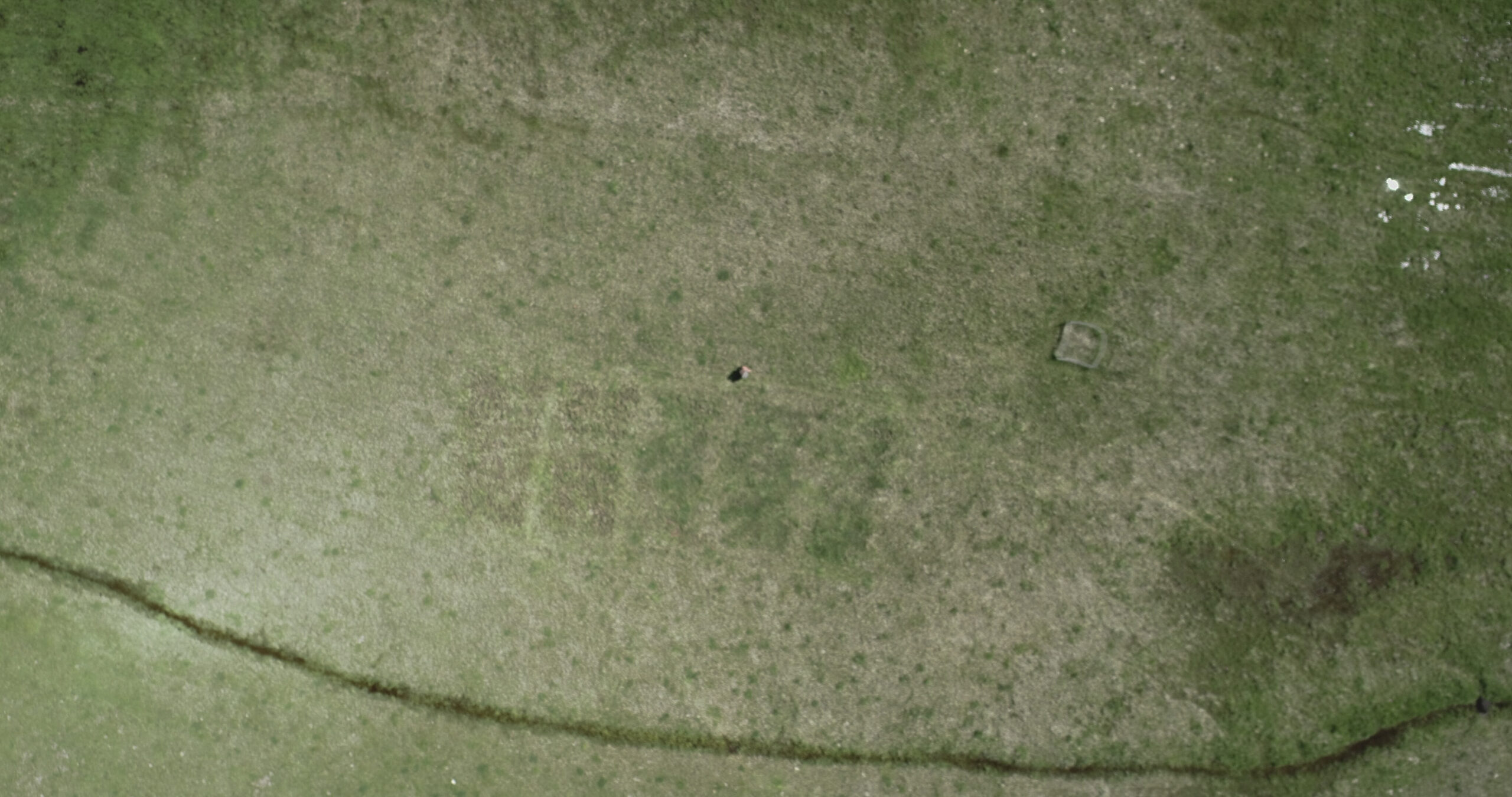 Image 1: Drone footage one month after application shows an increase in biomass production at CH. This image shows the 5 replicates at Coldharbour Ranch (CH). We hypothesize that this was from improved water retention and nitrogen from the compost. This site had a significant increase in biomass after the compost was applied.[/caption]
Image 1: Drone footage one month after application shows an increase in biomass production at CH. This image shows the 5 replicates at Coldharbour Ranch (CH). We hypothesize that this was from improved water retention and nitrogen from the compost. This site had a significant increase in biomass after the compost was applied.[/caption]
Our findings can help to inform ranchers in this region with site-specific examples of how a biosolid compost amendment can help to support their ranching operations to withstand periods of droughts while improving the productivity of their irrigated pasturelands. Ranchers noted that the treatment sites were favored by grazing cattle, most likely from increased nutrient availability in the grasses from the compost. This study also hopes to prove that the use of a Class A biosolids compost is a viable option for a compost choice, and should be utilized within communities that have wastewater treatment plants that generate compost.
Another graduate student at Western Colorado University is currently conducting her research thesis at these sites. These sites are being maintained to study the long-term impacts of compost addition on soil health.
[caption id="attachment_731811" align="alignnone" width="546"]
 Figure 1: Average change in SOM at treatment and control plots at all four sites. There was a general trend of increased SOM with the treatment of compost.
Figure 1: Average change in SOM at treatment and control plots at all four sites. There was a general trend of increased SOM with the treatment of compost.
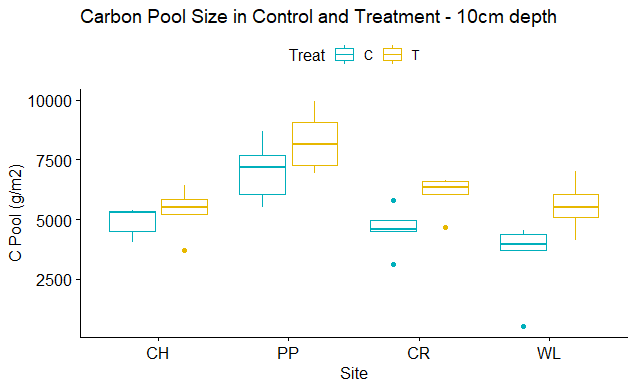 [/caption]
[/caption]
Figure 2: Carbon pool size changes in treatment and control across sites did not significantly change, but there was a general trend of increased carbon in the pool. This graph was generated off of the hypothesized 10 cm sampling depth. Not all sites were able to achieve the desired depth of core sampling. A hypothesized depth of 10 cm across sites was used to gain clarity in the effects of this treatment across sites.
[caption id="attachment_731815" align="alignnone" width="699"]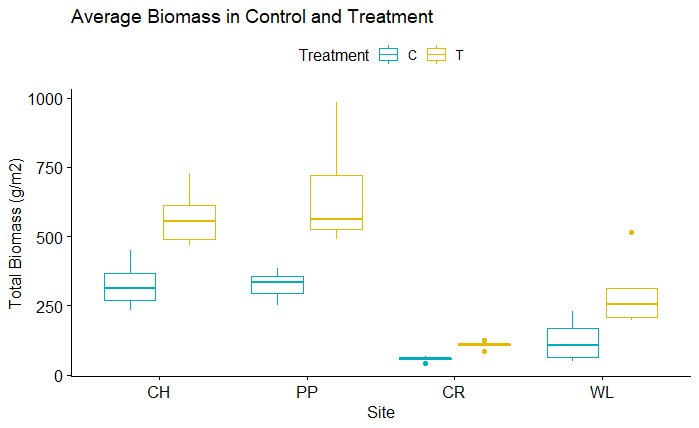 Figure 3: Average biomass production was a combination of live standing biomass and forbs. There was a general trend of increased biomass production at all treatment sites.[/caption] [caption id="attachment_731812" align="alignnone" width="709"]
Figure 3: Average biomass production was a combination of live standing biomass and forbs. There was a general trend of increased biomass production at all treatment sites.[/caption] [caption id="attachment_731812" align="alignnone" width="709"] Figure 4: Soil moisture, as volumetric water content %, from July to October 2019. The red line is the control, the blue line is treatment. Grey outline represents the 95% confidence interval, when the grey of the lines overlaps, there is not a significant change. Most treatment sites maintained a higher soil moisture content in comparison to paired control sites.[/caption]
Figure 4: Soil moisture, as volumetric water content %, from July to October 2019. The red line is the control, the blue line is treatment. Grey outline represents the 95% confidence interval, when the grey of the lines overlaps, there is not a significant change. Most treatment sites maintained a higher soil moisture content in comparison to paired control sites.[/caption]
Species Richness between Control and Treatment
[caption id="attachment_731816" align="alignnone" width="612"]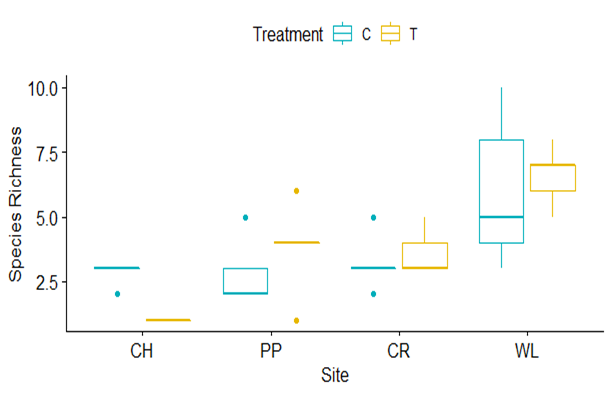 Figure 5: Species richness across sites was not significantly changed with the application of compost. Species richness varied across sites from 1 to 10.[/caption]
Figure 5: Species richness across sites was not significantly changed with the application of compost. Species richness varied across sites from 1 to 10.[/caption]
Proportion of Forbs to Graminoids at Control and Treatment
[caption id="attachment_731818" align="alignnone" width="715"]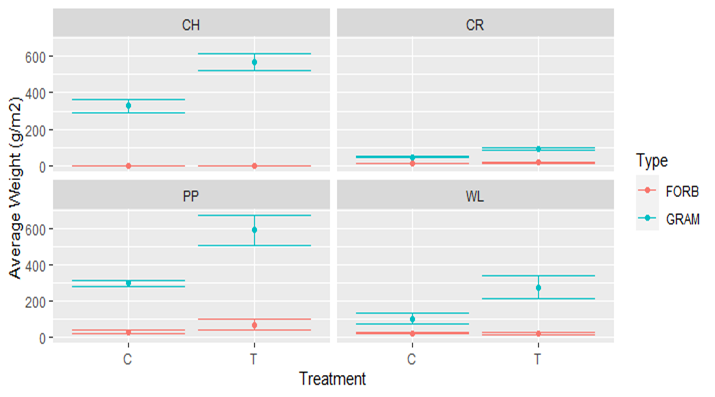 Figure 6: Across sites, compost did not significantly alter the number of grasses to forbs, like clover.[/caption]
Figure 6: Across sites, compost did not significantly alter the number of grasses to forbs, like clover.[/caption]
Project objectives:
The goal of this research was to provide ranchers and rangeland managers with site-specific research on how to compost amendments in this climate impact their land's soil water holding capacity, ecosystem resilience to climate change, and potential for climate mitigation through soil carbon sequestration.
With additions of compost to rangelands we expected to:
- Increase soil health, specifically looking at soil moisture and SOM.
- Increase plant productivity
- Foster increased soil carbon sequestration.
- Better understand the role of soil microbial community structure in influencing soil carbon sequestration.
An additional objective:
5. We assessed ranchers’ needs and interests in improving soil health and shared the results of this study with the community in order to inform future land management practices.
To achieve objective 1 (increase soil health), we quantified differences in soil pH, moisture content, organic matter, and bulk density between rangelands sites treated with compost versus untreated sites. To determine changes in the soil’s water-holding capacity (WHC), soil moisture was monitored (volumetric water content % ) throughout the growing season.
To achieve objective 2, we measured differences in plant biomass between the treatment sites and control.
To achieve objective 3, we quantified the amount of carbon that had been sequestered in the soil in the treated and control sites.
To achieve objective 4, we measured soil microbial community structure and respiration in the treated and control sites.
To achieve objective 5, we held a soil health workshop for the local agriculture community.